What's in your Victory Bag?

I'm often asked how I pack my Victory Bag for races when using it as a drop bag, and what I find to be essential items when racing. The answer: however it needs to be packed, and whatever I need that the event won't have available. Every race is different, and every individual is different. That being said, I still have my personal preferences which dictated many of the features created in all of the Victory Bags.
For all intent and purpose, I thought I'd focus on the BEAR III, which was specifically designed to work as a great all-use gear bag, as well as fit within the size parameters of what many ultra races are now requesting of runners. Interestingly, I discovered that the size was perfect for not over-packing, while still allowing for more than is necessary.
In the design process, it wasn't enough to simply have a durable bag that would be thrown around by event personnel as well as stand up to the long hours under the elements at aid stations. It needed to be thoughtfully organized in it's construction.
After hours of running, no one wants to be digging around in a black hole bag trying to find the one thing that might not even be there. This is aggravated three-fold when it's cold, you're sleep-deprived and searching for something in the dark.
While this general write up is "geared" toward packing for 100 milers, I'll have follow-up posts detailing specific lists of items I'd recommend having in your bag for different distances. This particular list is a breakdown of each special storage component of the BEAR III, and the most common items a race won't supply at aid stations that I would either pack in those areas, as well as other items I would recommend for storage on race day.
- The main interior compartment: Not only is it divided with a removable see-through pouch, there are two removable, insulated, water bottle holders. I usually take out one of the bottle holders and detach one side of the see-through pouch in order to swing it out of the way and make room for large items. Shoes, hiking poles, heavy jacket, warm long pants, and extra clothes can easily fit in this configuration. I'm a size 9/10 shoe, so of course something in the size 14 realm would probably need to have the second bottle holder removed. Have no fear; if that's the case and you still want to use one of bottle holders, I simply detach it and lay it on it's side above or beneath the shoes, clothes, etc. In addition, The BEAR III comes with a Dirtbag called the PIGLET. Yes, every bag is named after an an animal I've seen. This bag is helpful with letting you store wet and dirty items in your bag without soiling everything else in it.


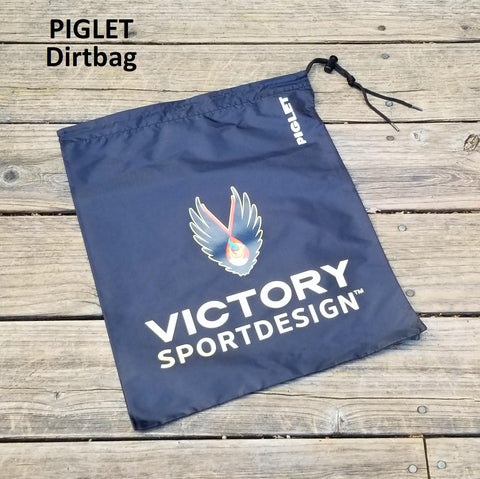
- Removable see-through pouch is great for items like gels, light gloves, socks, sunblock, contacts, lip balm, body lube, inhaler, personal medication, and really whatever important item that fits and needs to be quickly identified.
- Removable, insulated, water bottle holders are perfect for keeping things cold or warm. Although I only use them for keeping liquids cold, some folks have kept food items that are perishable, and can be squished by the rough handling of the bags at events. I've also used the holders as small drop bags just by themselves. If all I need is a few gels, liquid nutrition powder or a headlamp, I can stow it, tape a label with my name, bib number, and aid station on it, then grab-n-go. On a fun side note, I've seen someone who put a frozen water bottle in the holder. When they went for it 5 hours into a race under 85 degree temps, it was still frozen!
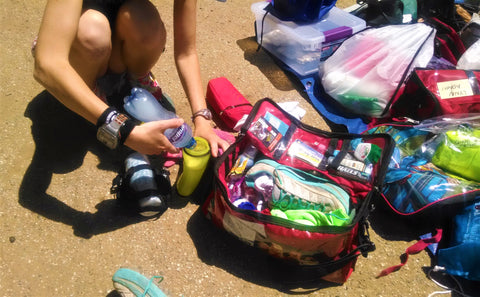
- 4 interior medium sized pockets: These can be some of the most important storage pockets. Each one of these pockets can be labeled to quickly identify and hold items like gloves, headlamps, beanies, headwrap, socks, glasses, nutrition, inhaler, tissue, hand sanitizer, medical supplies, foot care, feminine hygiene items, etc... During a point to point or loop event, I usually store whatever makes the most sense for the location of the bag, and the time I'll be getting to it. I try to keep it simple with the labeling, only listing three to four of the items within it. If the event is an out and back, or crosses an aid station several times, I'll often label the pockets 'pass one', 'pass two', and so on. If that's the case, each pocket will have whatever I need in a small baggie that I can grab and go with until I get back to my bag for the next pass.

- 6 interior see-through pockets: These pockets are relatively shallow, and more like windows specifically to keep them from being overfilled. If an item you need is small and necessary to locate quickly, this is where it goes. I store gels, salt tabs, extra batteries, pocket knife, safety pins, lighter/matches, and medical items (scissors, tweezer, band aids, lube, personal medication) in them.
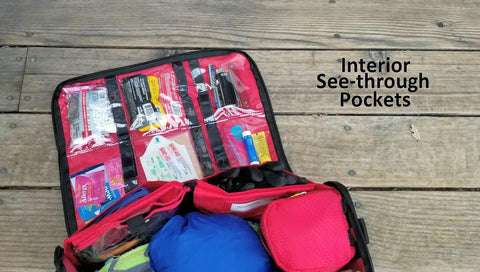
- 2 back interior wall open pockets: These pockets can be used as overflow. extra doubled up items like headwrap, beanie, socks, gators, ankle/knee brace, gloves, clean wipes/hand sanitizer, tissue, etc.
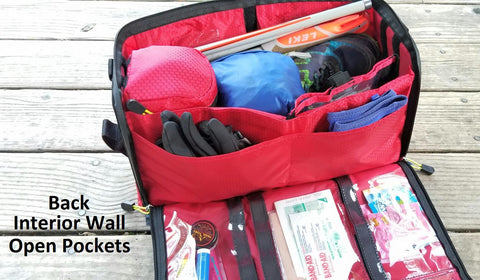
- The exterior side pocket is small and was originally designed to stow the shoulder strap when not in use. Of course, anything that is small can be stored within it. When I'm traveling I stick my keys in it.

- Large and small exterior see-through windows: Although both of these are meant for personalizing your bag with a name, bib number, inspirational photo, or artwork, I've seen others utilize them to store items like pace charts, course maps, and gels. Again, it's all about being creative and using the bag as a tool to get you in and out of aid stations as fast as you can.
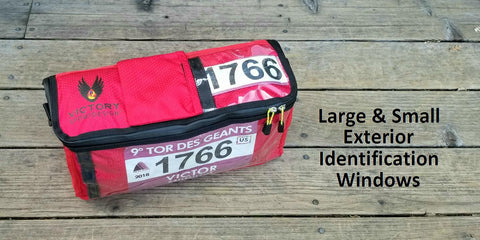
When all is said and done, it really is the bag that thinks for you. If you invest the time to plan out countless hours preparing for an event with specific training, honing in on your nutrition, and finding the gear that works best to get you to the start, why wouldn't you invest in a race day bag that can actually aid you to a speedier finish? That's right. I said it. It will make you faster by not dilly-dallying at aid stations, blindly searching for things. I designed the Victory Bags to help me speed through races, and I created them to help you. In a July 2017 Ultrarunning Magazine article, The great Errol "The Rocket" Jones lamented the same sentiment about the personal investment into a smart drop bag. 'Nuff said. That's our story, and we're sticking to it!


Great article with some really good tips! Shows how well thought out your bags are. Thanks for sharing!
Victor, Thanks for the info. I love my Victory Bags and am always interested to see how others are using theirs. It was especially nice to hear from the accomplished runner and designer of this bag, to see how you use it. Thanks for the inspiration. :)
Leave a comment